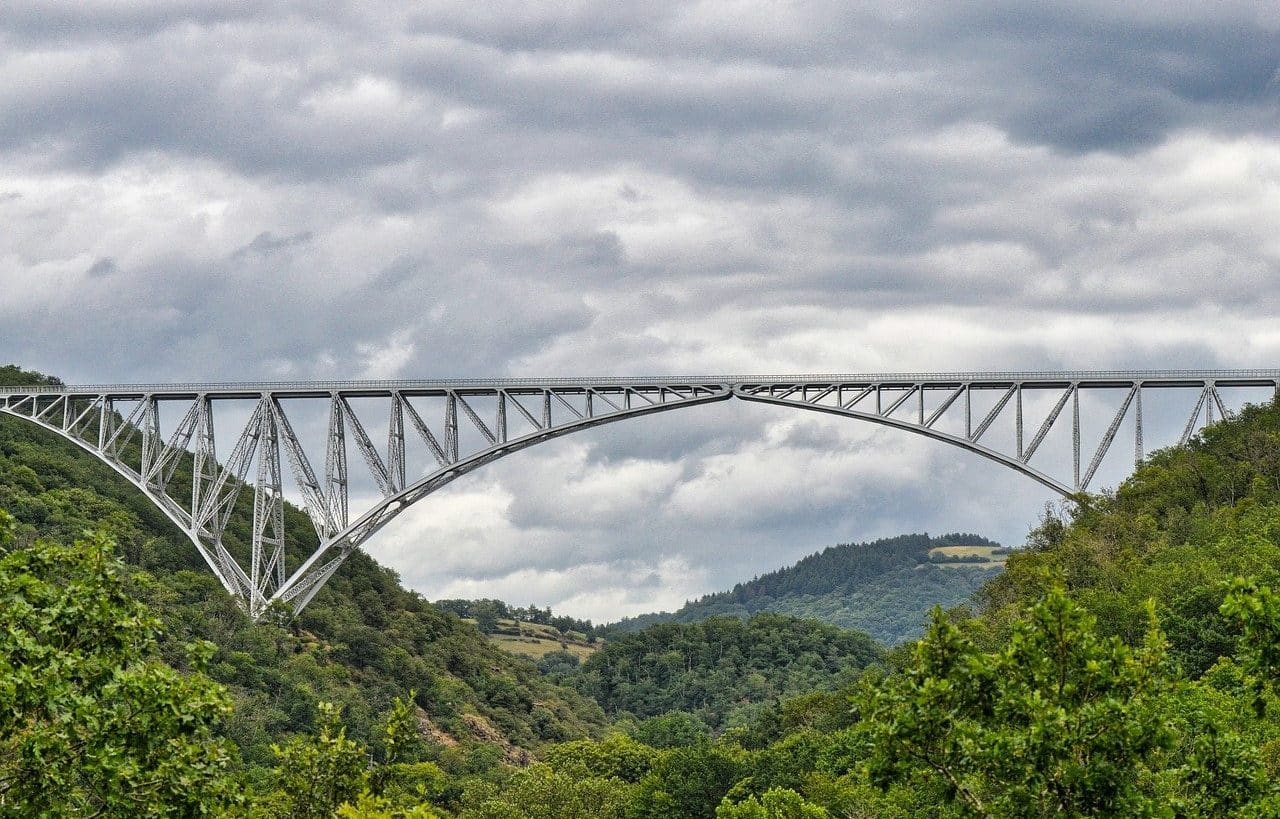
A viaduct is similar to a bridge.
Viaduct is a concept that comes from two Latin words: via (which can be translated as " way " ) and ductus (whose meaning in our language is "conduction" ). A viaduct, therefore, is a work developed through engineering that allows it to cross the entire surface of a valley .
Similar to a bridge , a viaduct can facilitate the passage of pedestrians or vehicles. That is why viaducts, in some cases, are roads ( routes ). There are also viaducts that are built for the installation of railway tracks that allow the transfer of a train .
Beyond the possibility of avoiding natural barriers thanks to these works , viaducts are also useful in cities to speed up traffic . By opening an airway for vehicle circulation , traditional streets and avenues are decongested.
Examples of viaducts
We can find examples of viaducts all over the world. In the Chilean city of Collipulli , to cite one case, we find the Malleco Viaduct , inaugurated in 1890 and declared a National Monument a century later. This railway viaduct allows you to cross the Malleco River .
In the French town of Aveyron, the Millau Viaduct stands out, whose inauguration took place at the end of 2004 . Built over the Tarn River , this viaduct is traveled by more than 10,000 vehicles every day.

The Millau Viaduct is located in France.
An emblem of Madrid
One of the most important viaducts that exists in Spain is the so-called Segovia Viaduct , which is located in Madrid . It is located in the area of Bailén and Segovia streets, close to the famous Royal Palace .
This work is made of reinforced and polished concrete, carried out in the 1970s , and is the result of the work of the architect Francisco Javier Ferrero and the engineers José Juan Aracil and Luis Aldaz Muguiro . It stands out for its numerous arches and it must be emphasized that before it there were two other viaducts, one from the second half of the 19th century and another from the 1930s of the 20th century.
It has a maximum height of 23 meters, it is a perfect example of rationalist architecture and also incorporates exposed brick as well as concrete.
Segovia Viaduct in art
It has become an emblem of the city, so much so that there are numerous cultural events in which it appears. Specifically, we can find references to it in works like these:
- In the work «Luces de bohemia» ( 1924 ) by Ramón María del Valle – Inclán .
- In films such as “High Heels” ( 1991 ) and “The Passenger Lovers” ( 2013 ) by La Mancha filmmaker Pedro Almodóvar .
- In numerous television series in Spain , such as "Los Serrano" .
One of the curiosities surrounding this viaduct is that it became a chosen place for suicides when it came to taking their own lives. It is established that in the 90s there were up to four suicides a month since then.
The aqueducts
It should be noted that, due to their characteristics , viaducts are similar to aqueducts , although the latter are used to transport water between two distant points.
It is interesting to note that the Romans were the main builders of aqueducts, and several examples of their work remain today.
